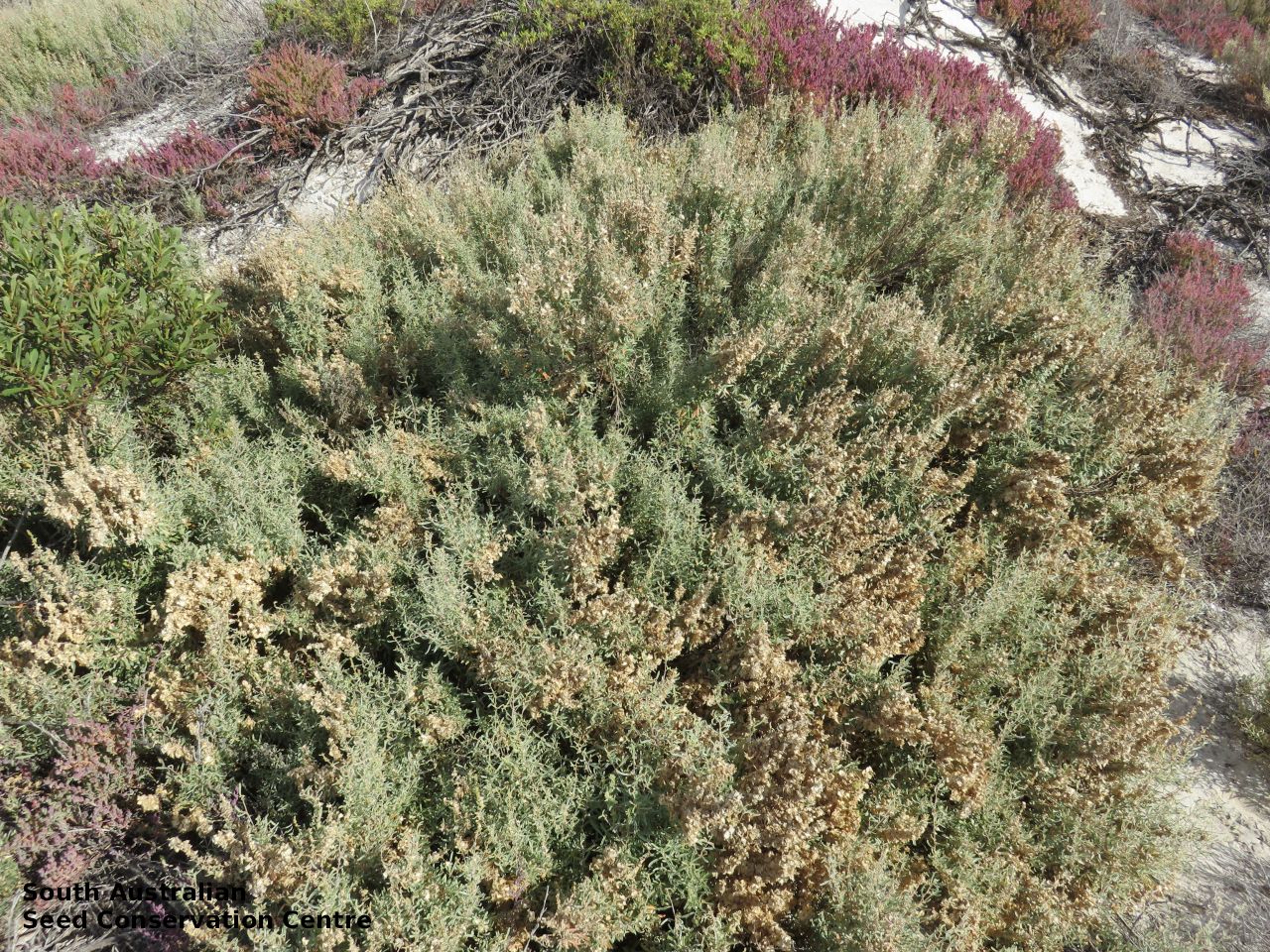
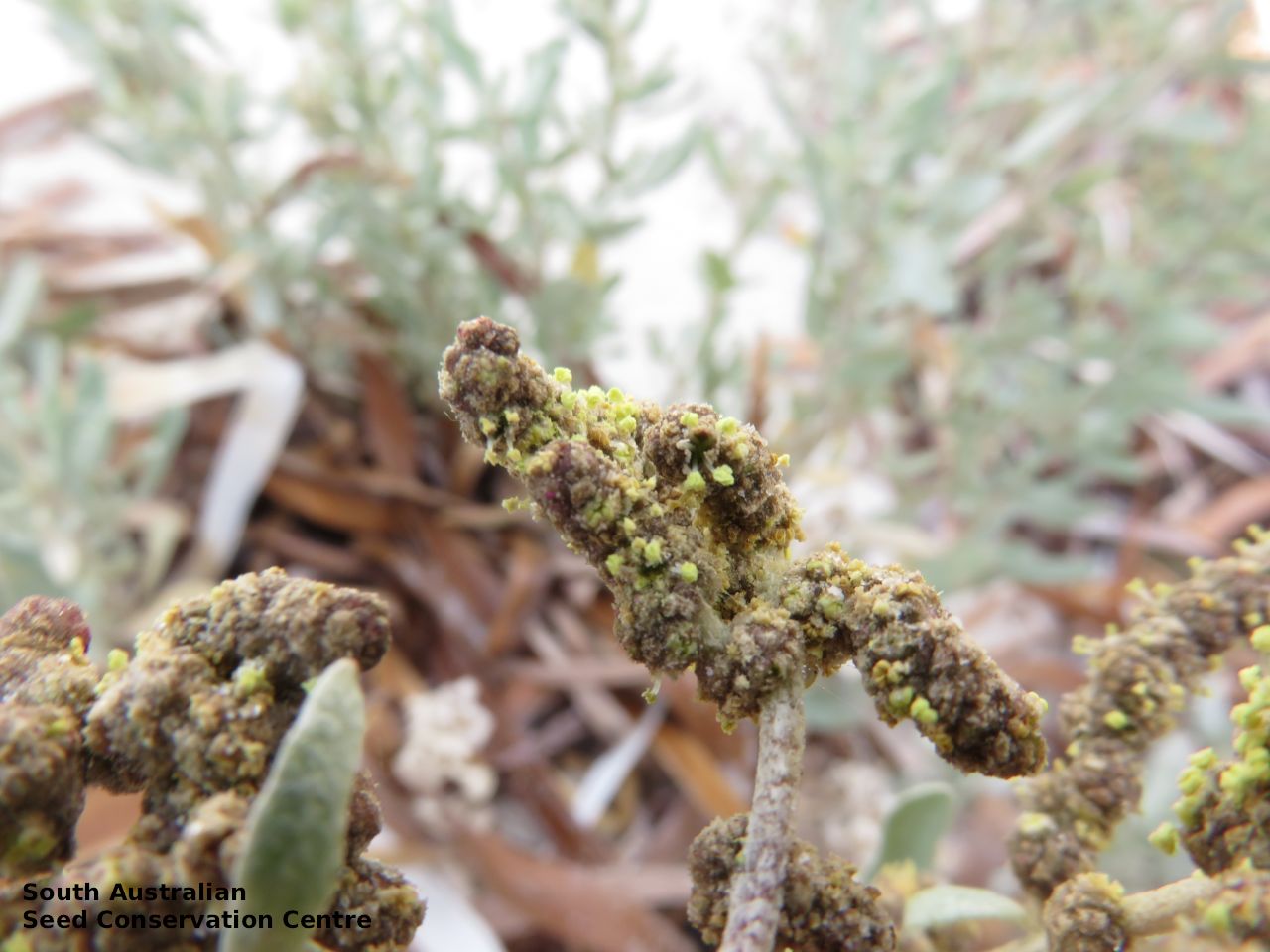
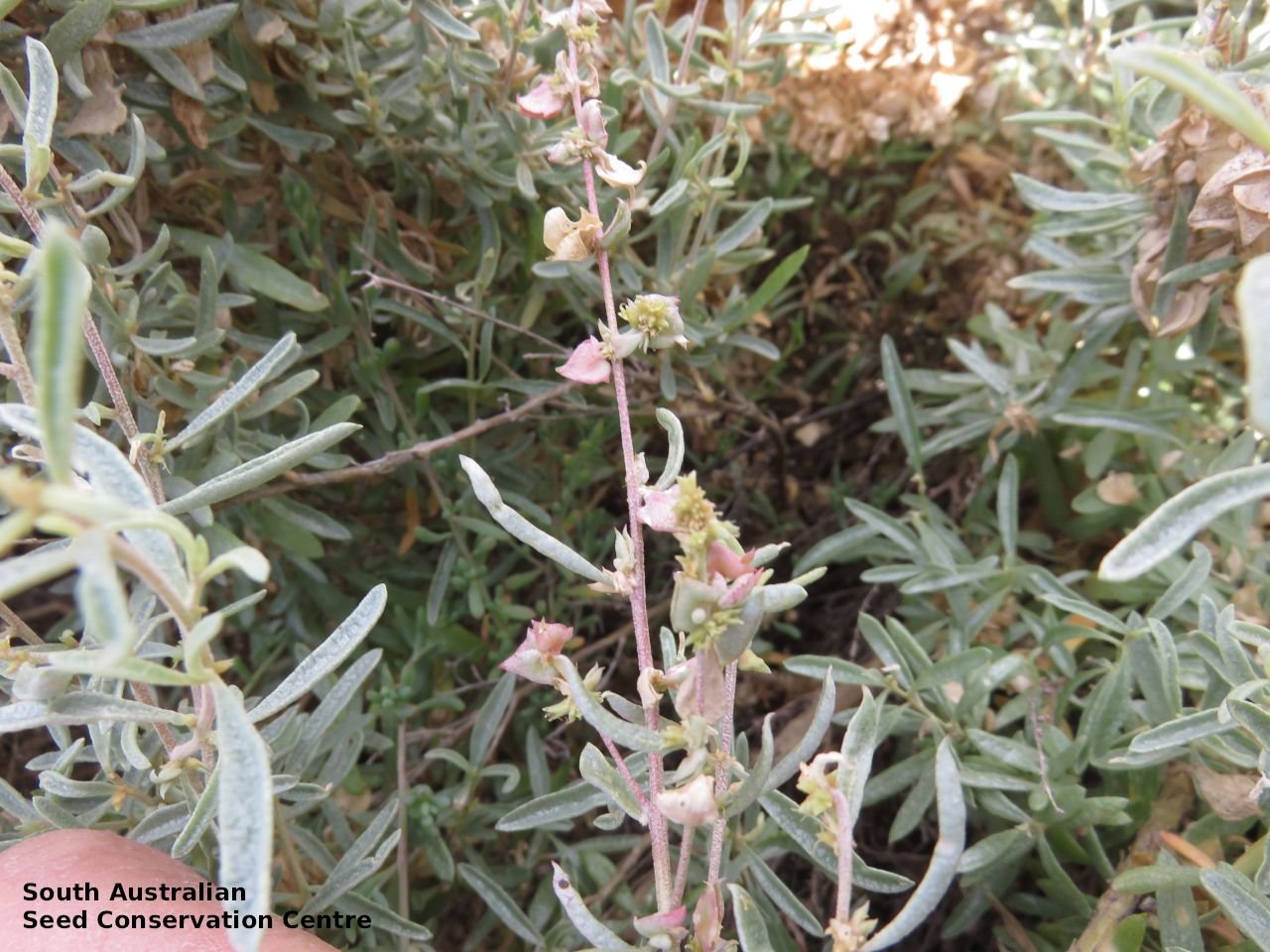
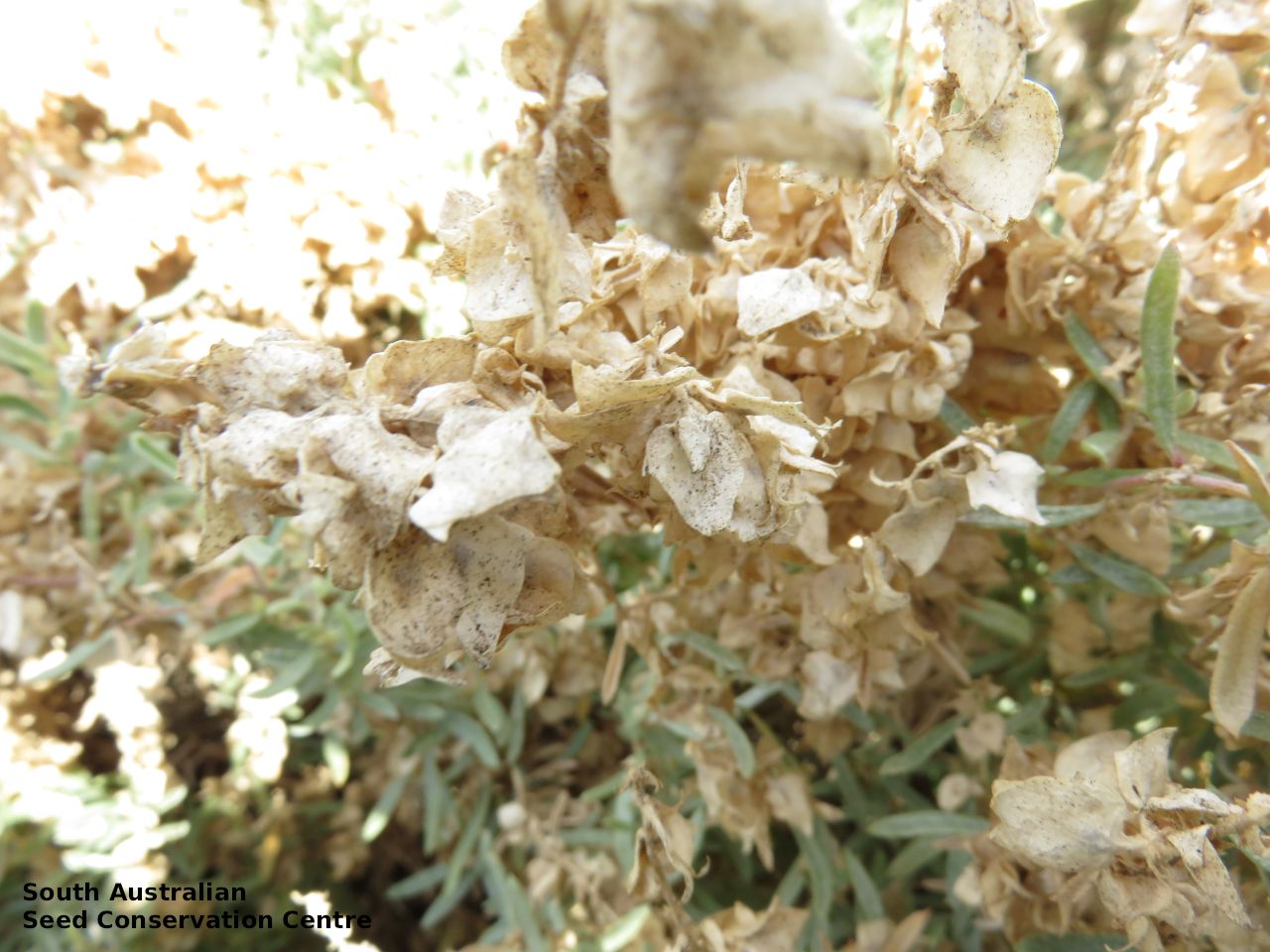
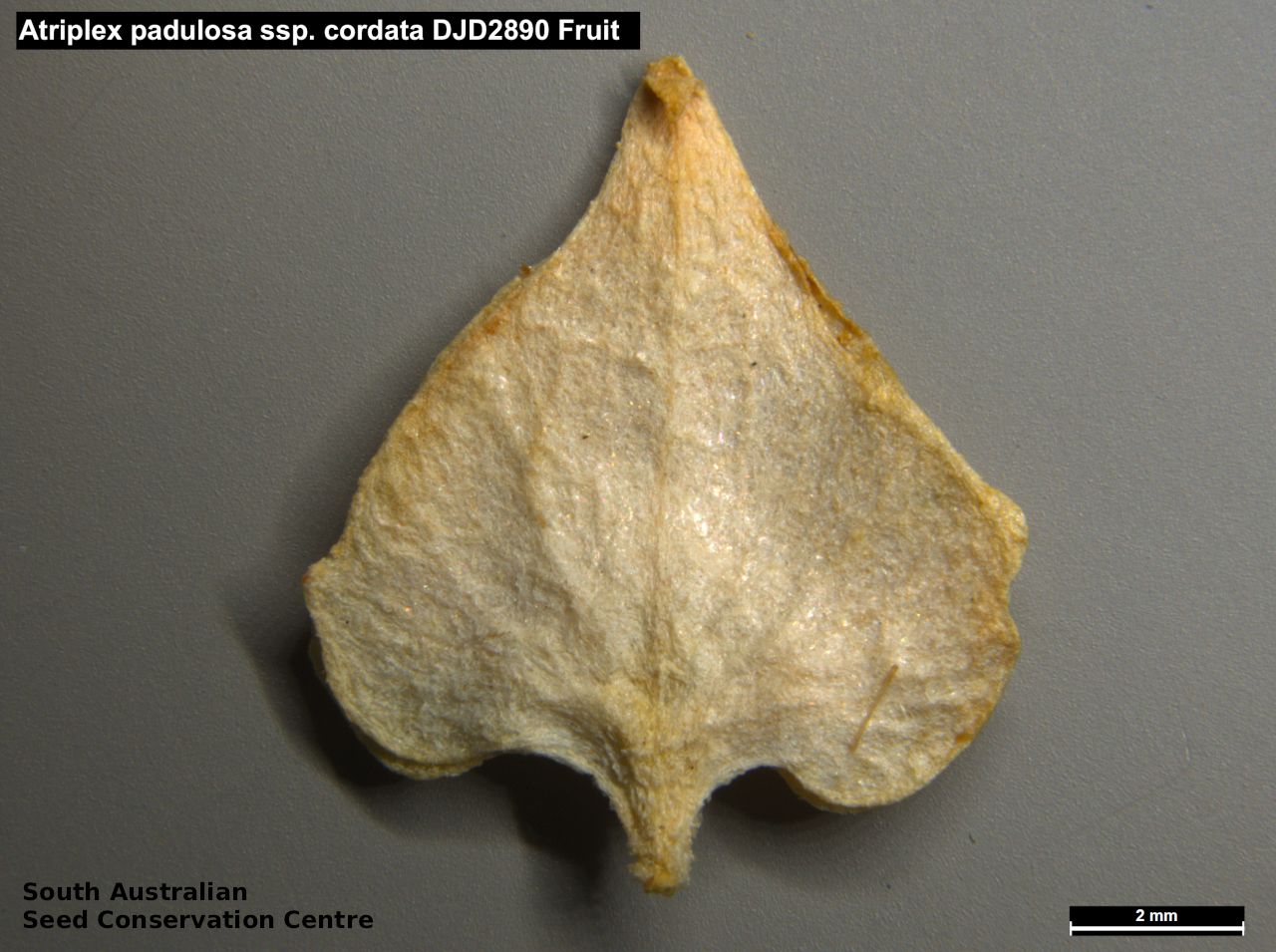
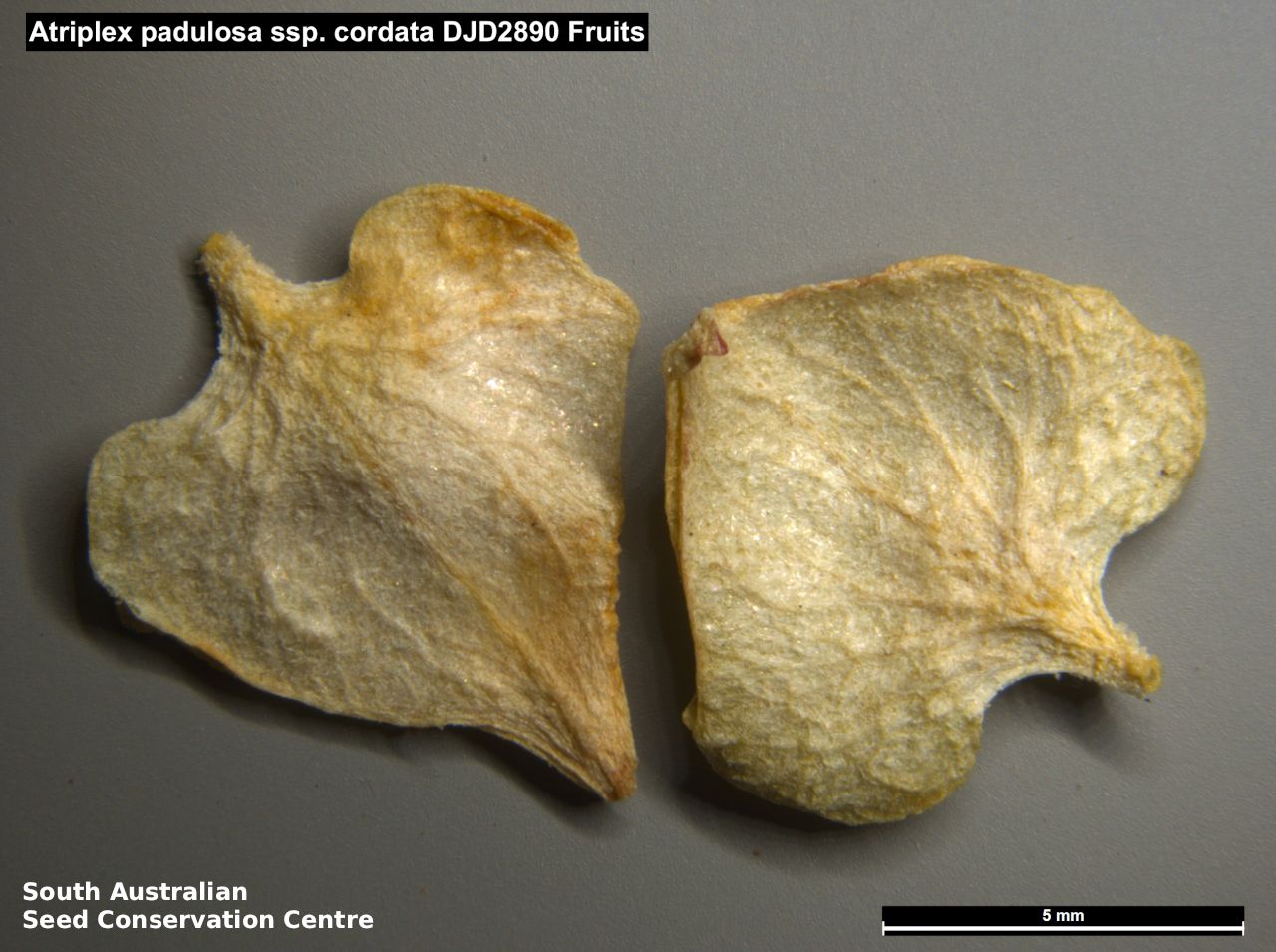
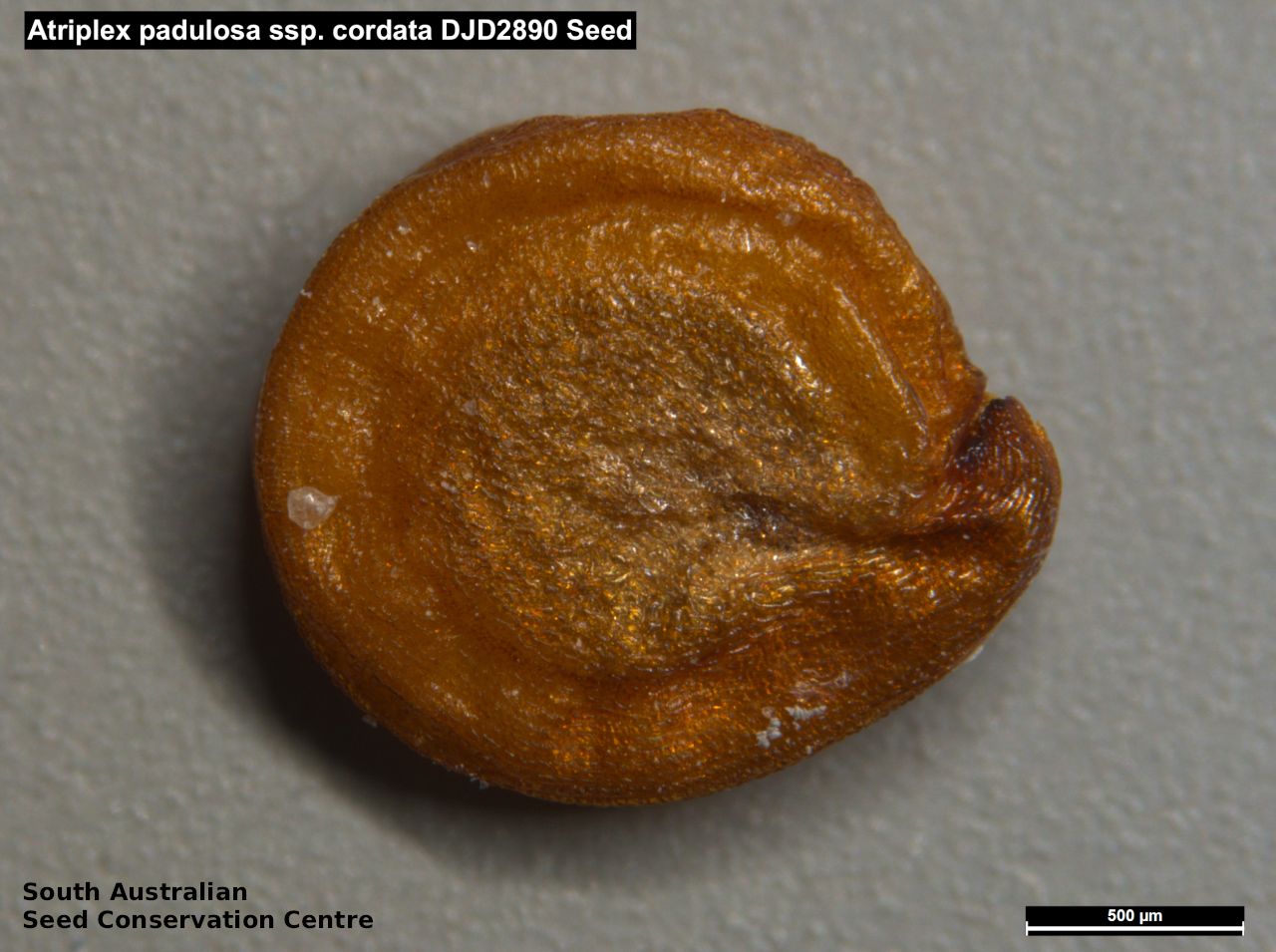
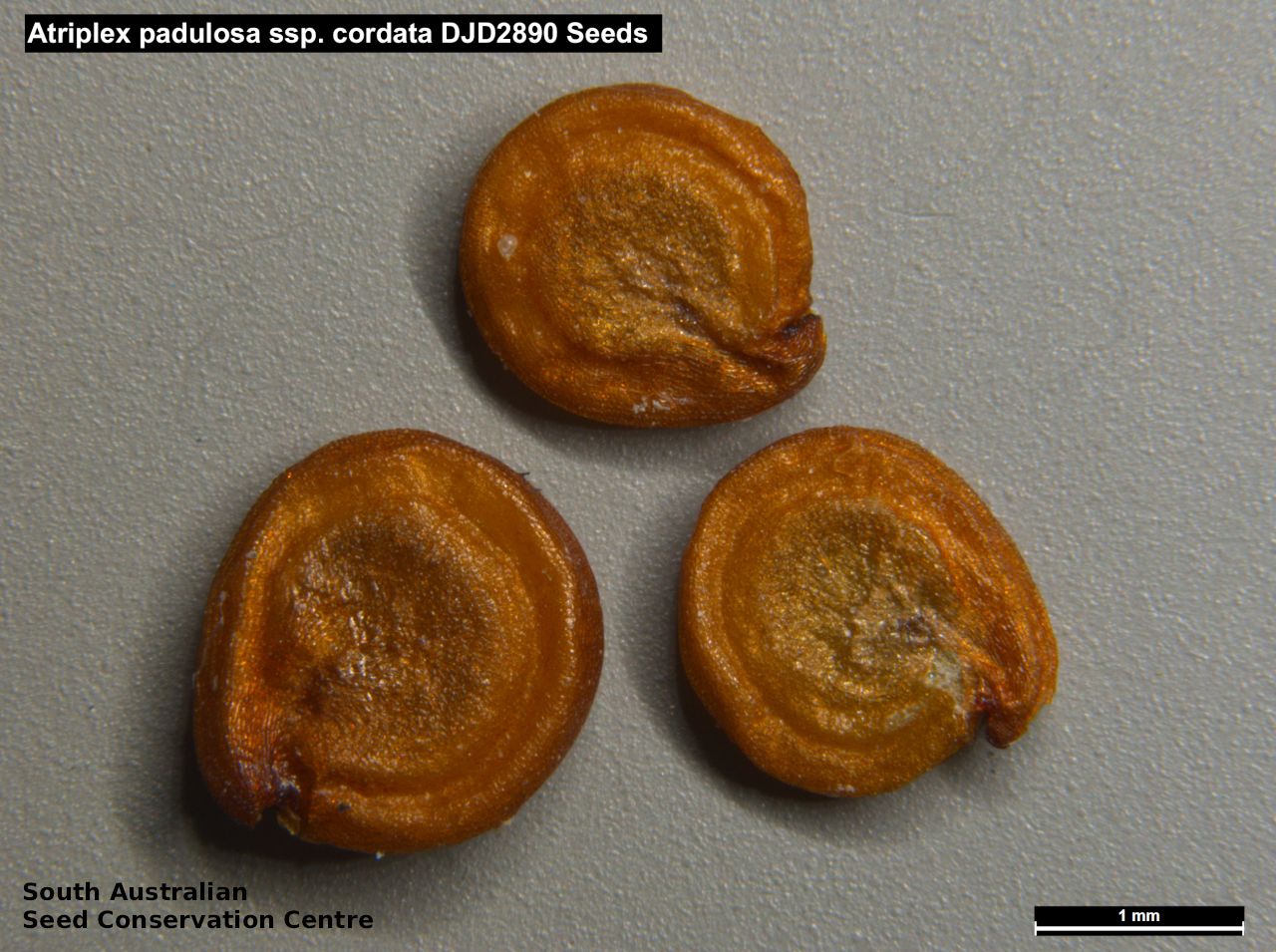

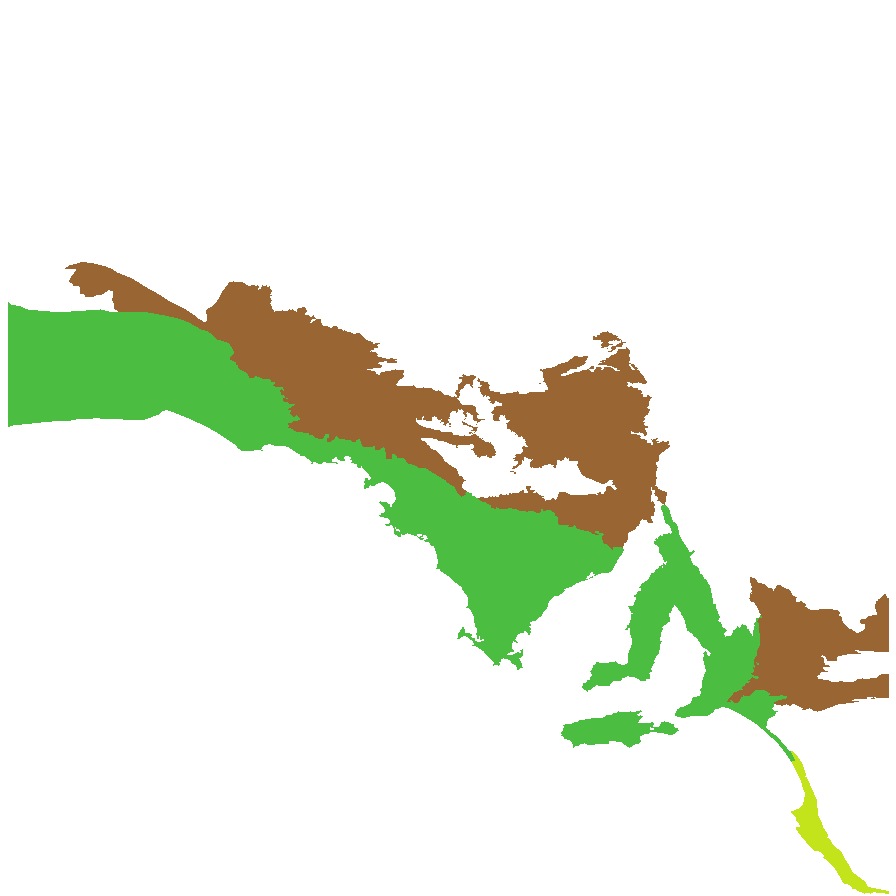
Botanical art
Prior names
Atriplex paludosa, s.l.
Atriplex paludosa var. cordivalvis
Atriplex paludosa var. cordata
Pachypharynx acuminata
Atriplex paludosa var. acuticordata
Atriplex reniformis
Common names
Heart-shaped Fruit Saltbush
Marsh Saltbush
Etymology
Atriplex from the Latin 'atriplexum' meaning an orache, a saltbush; an Ancient Latin name for this plant. Paludosa from the Latin 'paludosus' meaning marshy, referring to the type species growing on fringes of coastal and near-coastal saltmarshes. Cordata from the Latin 'cordatus' meaning heart-shaped, referring to the shape of the fruit in this subspecies.
Distribution and status
Found along the coast in South Australia, from the Nullarbor to the upper South-east, growing on limestone cliffs and coastal stable dunes. Also found in Western Australia. Native. Common in South Australia. Uncommon in Western Australia.
Herbarium regions: Nullarbor, Eyre Peninsula, Northern Lofty, Murray, Yorke Peninsula, Southern Lofty, Kangaroo Island, South Eastern, Green Adelaide
NRM regions: Adelaide and Mount Lofty Ranges, Alinytjara Wilurara, Eyre Peninsula, Kangaroo Island, Northern and Yorke, South Australian Murray-Darling Basin, South East
AVH map: SA distribution map (external link)
Plant description
Erect shrub to 1 m high. Leaves very narrow-elliptic, acute, entire; scaly all over with leaf blade to 25 mm long and 4 mm wide. Male flowers in clusters along a spike; female flowers in dense panicles. This subspecies differs from the other subspecies found in South Australia by being an erect shrub with leaves that are scaly all over, compared to Atriplex paluoda ssp. paludosa which is a decumbent shrub with leaves that are glabrous above. Flowering throughout the year. Fruits are heart-shaped fruit to 10 mm long and 12 mm wide; acute, truncate to cordate at the base. Seed embryo type is peripheral.
Seed collection and propagation
Collect seeds between January and December. Collect fruits that are starting to dry or and turn brown. Fruits can be collected directly from the bush or from the ground underneath Place the fruits in a tray and leave to dry for one to two weeks. No cleaning is required if only the fruits are collected. The seed can be stored in the fruit or can be cleaned further. Rub the fruit gently by hand to dislodge the seeds. Use a sieve to separate the unwanted material. Store the seeds with a desiccant such as dried silica beads or dry rice, in an air tight container in a cool and dry place.